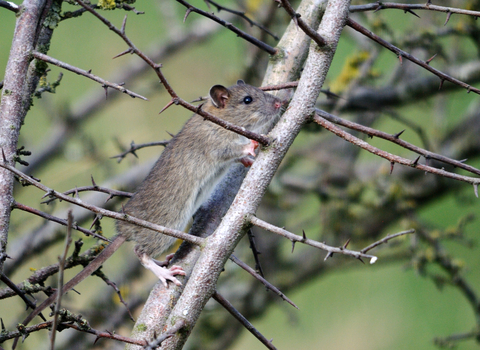
©Amy Lewis
Brown rat
The brown rat has a bad reputation, but it mostly lives side-by-side with us without any problems. It can be seen in any habitat.
Scientific name
Rattus norvegicusWhen to see
January to DecemberSpecies information
Statistics
Length: 15-27cmTail: 10-24cm
Weight: 200-300g
Average lifespan: 1-3 years
Common.
About
The brown rat is an incredibly adaptable mammal and can be found almost everywhere in the UK, in any habitat, all it needs is shelter and food. Brown rats are omnivorous, eating pretty much anything, from fruit and seeds to human food waste, insects, birds' eggs or even small mammals. They are particularly common around towns and cities. Brown rats live in loose colonies and dig their own burrows. They are famously good breeders; a female brown rat can breed from around 3 months old, and has an average of five litters a year, each of up to 12 young.How to identify
The brown rat has grey-brown fur, a pointed nose, large, bare ears and a long, scaly tail. It is much bigger than any mouse species. The similar water vole has a much rounder face, small ears that do not protrude, and a furry tail.Distribution
Widespread.In our area
It is considered bad luck to say this species' name in the Isle of Man. Instead they are referred to as Longtails, Ringies or r.a.t.s.
Did you know?
Originating from central Asia, the brown rat was introduced into the UK in the 1700s; in fact, it was carried on ships throughout the world and is now widespread. Its success is due both to its adaptability to a wide range of habitats and its incredible breeding rate.It is considered bad luck to say this species' name in the Isle of Man. Instead they are referred to as Longtails, Ringies or r.a.t.s.
